The Agentic AI Stack: Transforming Businesses with Intelligent AI Agents
March 31, 2025

The Agentic AI Stack is a powerful framework that helps businesses build intelligent AI systems that can think, learn, and collaborate like human teams. It consists of five essential layers—data retrieval, orchestration, reasoning, learning, and compliance—ensuring smooth automation, quick decision-making, and security. By using Agentic AI, companies can improve efficiency, enhance customer experiences, and drive innovation with a smart digital workforce.
What is Agentic AI?
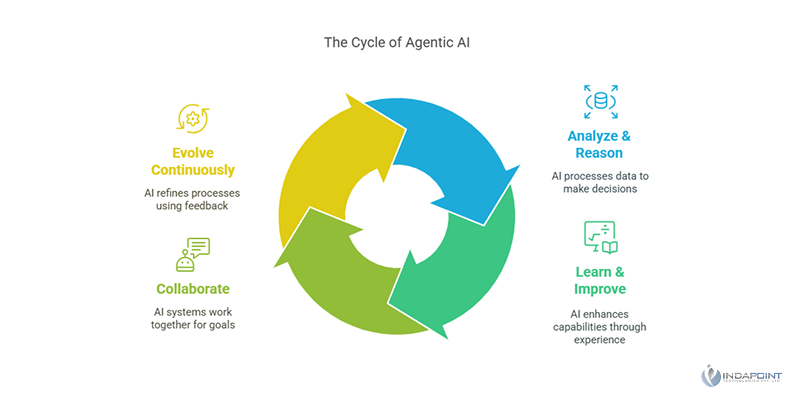
Agentic AI is an advanced system made up of autonomous agents—intelligent software that can understand their surroundings, make decisions, and take actions to achieve business goals. Unlike traditional automation tools, these AI agents:
- Analyze & reason : They process complex data and make informed decisions.
- Learn & improve : They get better over time by learning from past experiences.
- Collaborate : They work together with other AI systems for shared goals.
- Evolve continuously : They refine their processes based on feedback.
For businesses, this means increased efficiency, smarter customer interactions, and faster decision-making.
The Five Layers of the Agentic AI Stack
To function effectively, Agentic AI operates through a structured system known as the Agentic AI Stack. This framework consists of five key layers:
1. Tool / Retrieval Layer – The Data Gateway
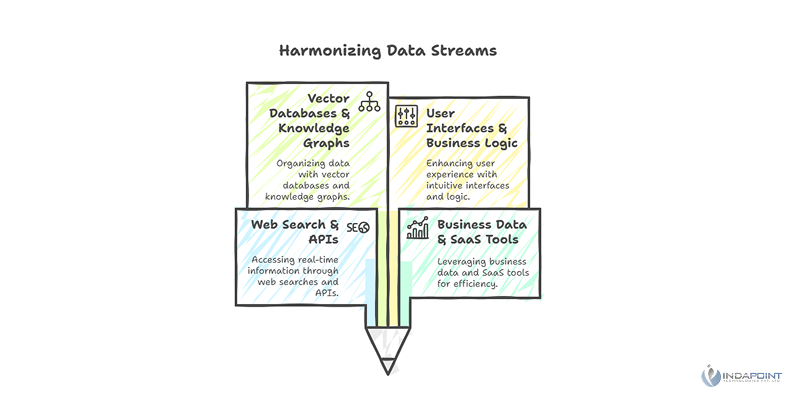
This layer is responsible for gathering and retrieving information from various sources, ensuring that AI agents have access to relevant data in real time.
Key Components:
- Web search & APIs
- Business data & SaaS tools
- Vector databases & knowledge graphs
- User interfaces & business logic
Business Impact:
By integrating AI agents into existing digital systems, companies ensure that their AI-driven decisions are accurate and informed.
2. Action / Orchestration Layer – The Execution Engine
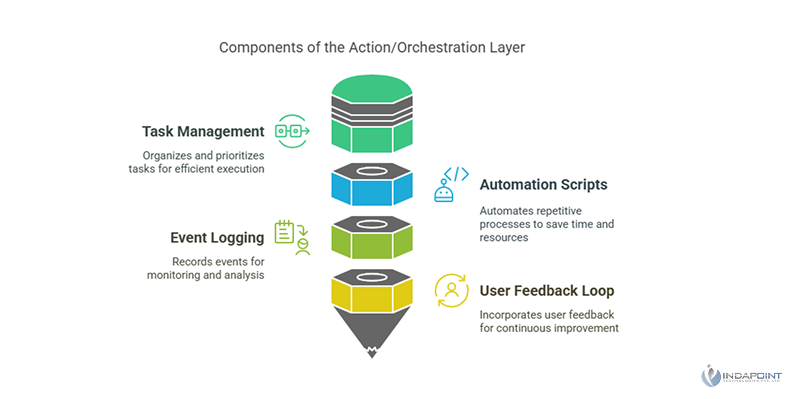
Once data is gathered, AI agents must take action. This layer manages task execution, automation, and persistent memory.
Key Features:
- Task management
- Automation scripts
- Event logging
- User feedback loop
Business Impact:
This layer allows AI agents to function seamlessly within enterprise workflows, improving productivity and process efficiency.
3. Reasoning Layer – The AI Brain
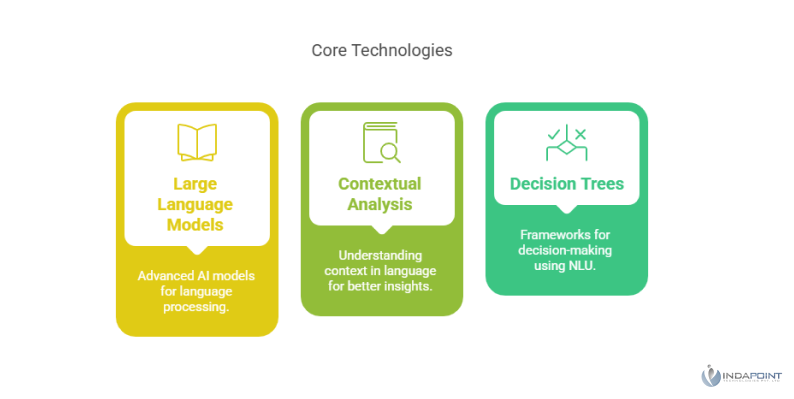
This is where intelligence happens. AI agents analyze information, identify patterns, and make decisions.
Core Technologies:
- Large Language Models (LLMs)
- Contextual analysis
- Decision trees & natural language understanding (NLU)
Business Impact:
AI agents can perform high-level decision-making, reducing human intervention and ensuring accuracy.
4. Feedback / Learning Layer – The Self-Improving System

AI agents continuously refine their actions by learning from feedback and outcomes.
Key Pillars:
- Performance metrics
- Model training
- Continuous improvement
Business Impact:
Over time, AI agents become smarter, leading to improved efficiency and innovation.
5. Security / Compliance Layer – The Safety Net
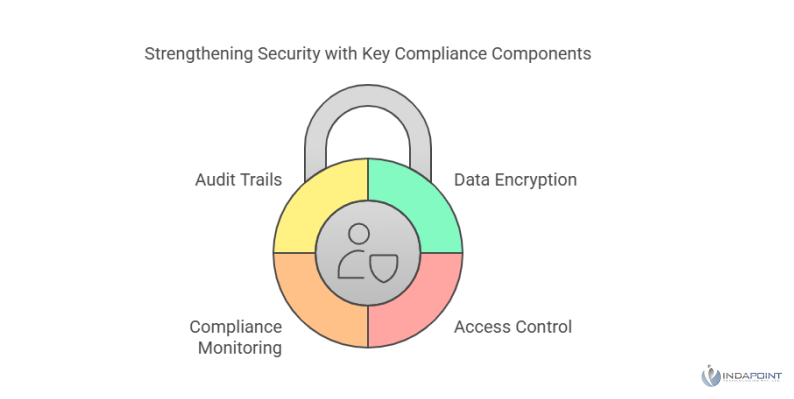
Ensuring AI operates within business rules and legal regulations is crucial.
Key Components:
- Data encryption
- Access control
- Compliance monitoring
- Audit trails
Business Impact:
This layer ensures businesses can deploy AI securely, mitigating risks and ensuring compliance.
Multi-Agent AI: The Power of Collaboration
A single AI agent is useful, but multiple agents working together create a more powerful system. These agents can coordinate in different ways:
- Cooperative : Working together towards a shared goal.
- Competitive : Optimizing individual tasks for efficiency
- Hierarchical : Structured like a human organization.
Business Impact:
By deploying multiple AI agents, companies can solve complex business challenges efficiently.
Use Cases for Enterprises
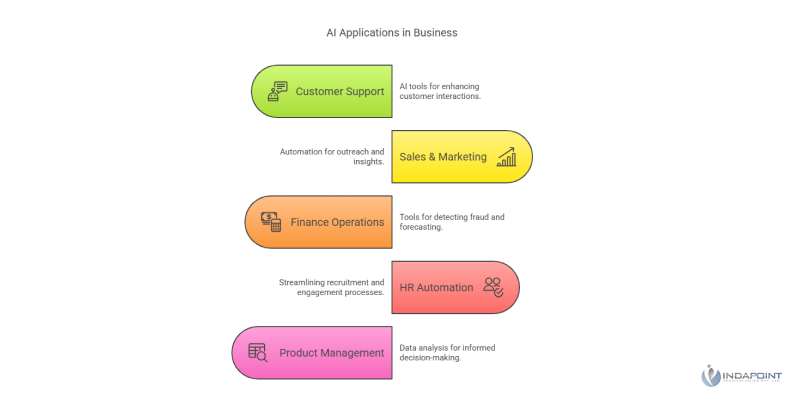
Agentic AI can be applied across various business functions, including:
- Customer Support :AI-powered chatbots and virtual assistants.
- Sales & Marketing :Automated outreach and customer insights.
- Finance Operations :Fraud detection and financial forecasting.
- HR Automation :AI-driven recruitment and employee engagement.
- Product Management :Intelligent data analysis for better decision-making.
How to Build Your Agentic AI Stack
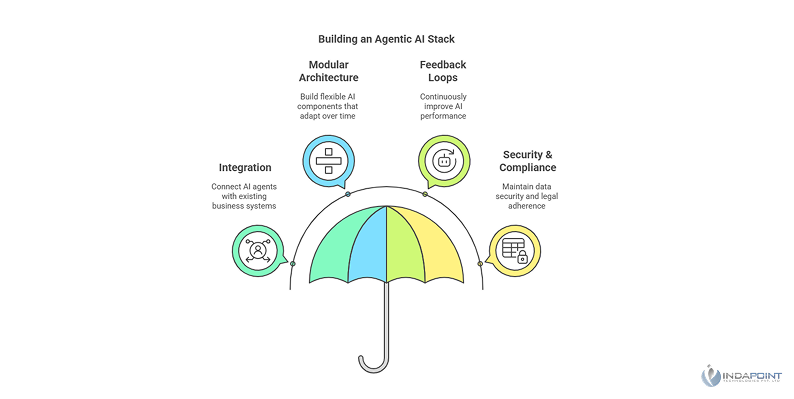
To successfully implement Agentic AI, businesses should follow these steps:
- Start with Integration :Connect AI agents with existing business systems.
- Use Modular Architecture :Build flexible AI components that adapt over time.
- Ensure Robust Feedback Loops :Continuously improve AI performance.
- Prioritize Security & Compliance :Maintain data security and legal adherence.
- Pilot with Purpose :Test AI capabilities with a focused approach.
Conclusion
The Agentic AI Stack is not just a technical framework—it’s the future of business automation. By integrating AI across data retrieval, reasoning, action, learning, and compliance, companies can build an adaptive, secure, and highly efficient digital workforce. This transformation enables businesses to stay ahead in an AI-driven world, unlocking new levels of innovation and productivity.
Ready to Transform Your Business with Agentic AI? Harness the power of Agentic AI to automate workflows, enhance decision-making, and drive innovation in your enterprise. Whether you’re looking to integrate AI agents into your business or build a customized Agentic AI Stack, our experts can help.





